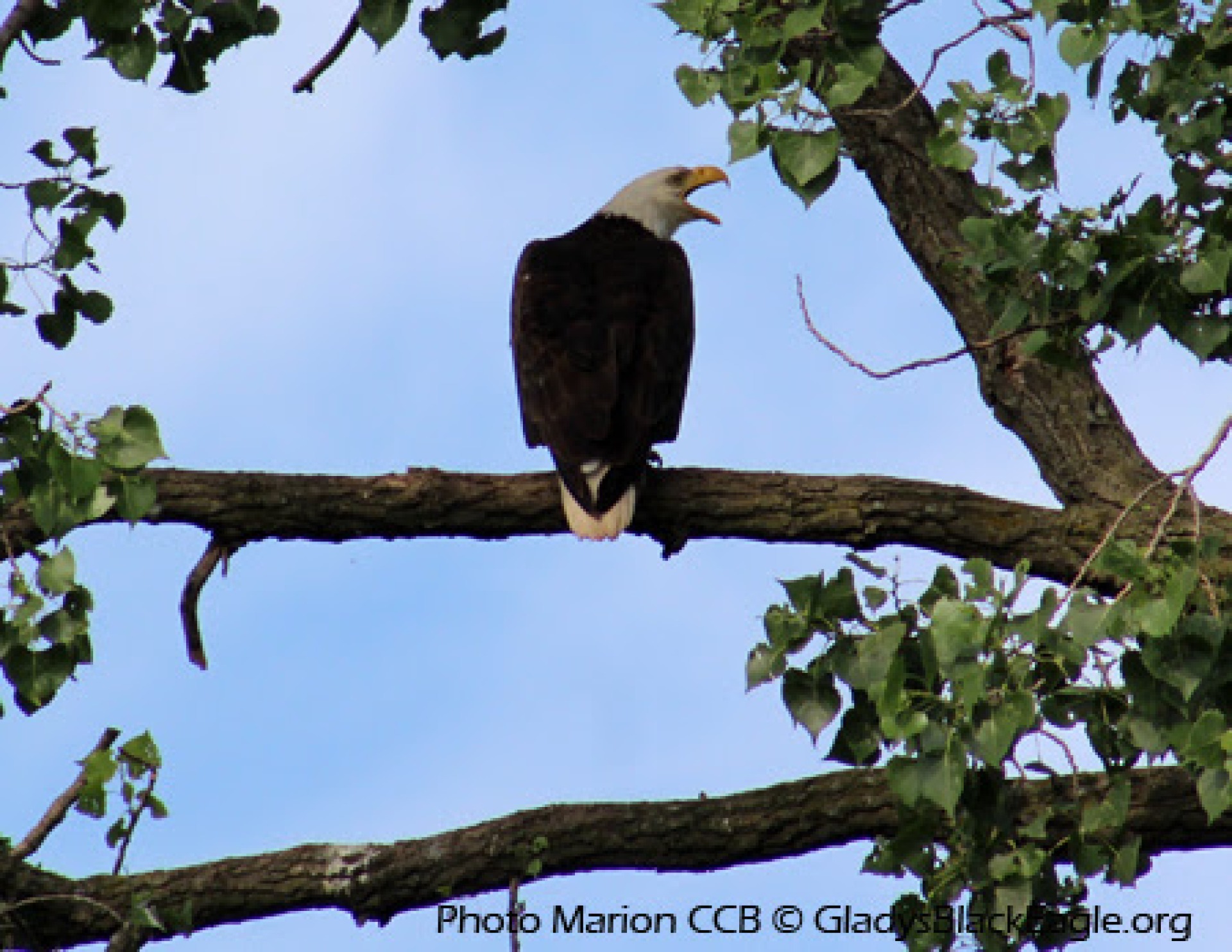When the bough breaks...
Marla Mertz, Marion County Conservation
“Rock-a-bye baby, in the treetop. When the wind blows the cradle will rock. When the bough breaks, the cradle will fall. And down will come baby, cradle and all.”
Do you recall this childhood lull-a-bye? Some say that ‘in theory’ rocking a baby in a calm, swaying motion is comforting. Laying the baby into their crib or cradle, the motion changes to “down will come baby”. Reflecting on my own childhood memories and repeating this to my own children, it was always in the back of my mind... No mother would ever want a bough to break and have a cradle come falling down.
Since this article isn’t about our human lull-a-byes and/or deep thoughts in dissecting the true meaning, this story is about a local, well-known eagle family that has just experienced, for the second time, of boughs breaking and their entire nest tumbling down.
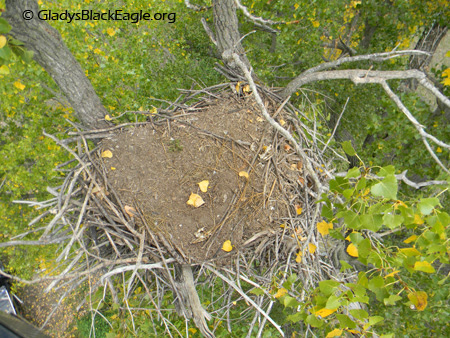
Many wildlife homes are in trees, whether originally built by them or added on, it can be a costly decision to their survival. In my tenure of working with our natural resources, storms, high wind days, floods, insect pests, and more have led to tragedy. Most nests are small, tidy and seem secure on a healthy tree or even in a dead/dying tree that is still standing. Eagle nests, on the other hand, are fine-tuned works of art, taking months of carrying sticks and remodeling year after year, weighing 1,000 pounds or more and purposely placed within a “tri-fork” where three branches that meet together.
In 2010, The Red Rock Lake Association had the desire to extend an eagle family educational opportunity to the students and families in Marion County. Many schools and families were tuning in to the Decorah Eagle nest cams and learning about ecosystems, but the RR Lake Association education committee, including myself, wanted to educate about the “family unit.” The number of eagle nests were growing in and around the Lake Red Rock area and we were hopeful to inspire students and families by viewing eagles right here in Marion County.
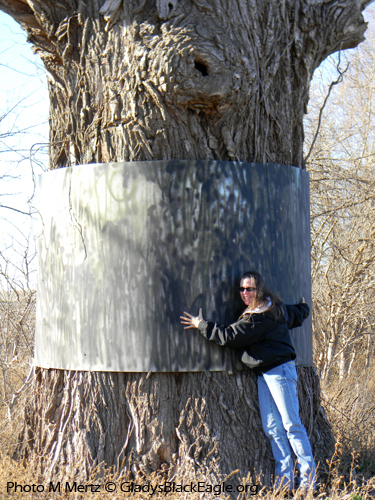
An eagle pair, quaintly referred to as the “Gladys Black Eagles” built a nest in an enormous cottonwood tree in a quiet little bay on the south side of Lake Red Rock in or around 2009. As a brief overview, cameras were mounted over the nest in late fall after their two young successfully fledged the nest tree in 2010. Needless to say, it took a village to accomplish this task 80 feet up and to connect the camera to technology for a live camera feed.
It appeared that we would be able to monitor the complete 2011 nesting season as the adults defended this territory through the winter months. As we say when working with nature, there was egg on our face when this eagle pair had chosen to build another nest about 3/4 mile away straight west of their first built nest (still within their territory). A nesting territory can be up to one-mile in radius around the active nest that is defended by the pair. It was quite the challenge to monitor this pair through a small telescope and camera set-up pointed at the yonder nest, keep it in alignment, and tend to social media.
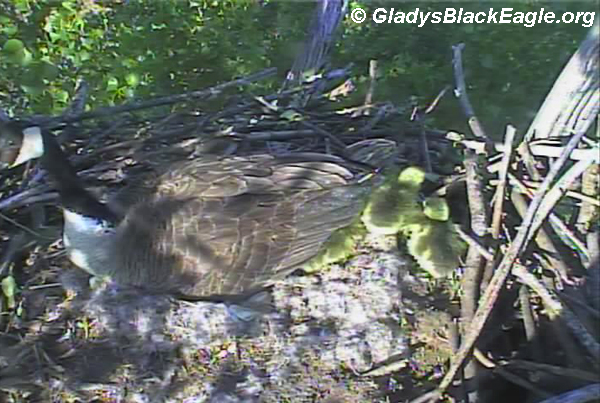
Since live feed was taken off of the original nest, little did we know that a pair of Canada geese chose this humble abode as their nest. The goose nest became an interest to the media, as it was a new concept to many that Canada geese would utilize an eagle’s nest. Although it was near time of hatch before the nest was discovered, the camera was able to capture the hatch and the parenting skills of Mother goose. The gander also did a grand job at enticing the family to make the 80’ jump. It took a few hours and a couple of mindful thoughts for Goose to leave the safety of her nest and the one unhatched egg. It was bittersweet to watch her process the day of transition but resulted in a successful hatch and fledge. Watch the video of the jump.
In 2012, the chosen eagle family successfully nested, raised two young, but only one survived to fledge. The newer nest was in a much denser timberline and became more difficult to monitor in the following years and was only periodically monitored by binocular or photo check. Unfortunately a wind storm took down their nest tree after the fledgling of the 2014 eaglets. In the fall of 2015 the pair chose to begin repairs and stick-carrying to plan their spring nesting season back to the original old cottonwood. It appeared that Goose wasn’t going to get the opportunity to utilize her eagle fashioned stick nest. The eagle pair primped and prepared their old nest, and by observation it appeared by their behavior that eggs were being laid in February. Although the cameras sat high above them, there was no power or funds to try and set them up again. Plus there are Federal Laws that protect their nesting tree and any interruptions. It was just a nice feeling that they continued to stay in their territory and utilize their first built nest.
Very little monitoring was being done, except for the occasional binocular checks. The 2017 nesting season was as normal as it could be, surviving storms, a cold and wet spring, and the field planting surrounding the tree. It was business as usual overcoming raccoons and other animals that can interrupt an eagle family and create stressful conditions. This pair had overcome many tragedies.
It wasn’t until I received a message on the eve of June 4 from a lady who has occasionally monitored and updated me about the nesting pair with what information could be gathered. She mentioned that the entire middle section of the tree had come tumbling down, eaglets and all. The thought of young still in the nest and trying to figure out their size and possible flight ability, it was a long sleepless night. It was hard to understand this tragedy...there had been no storms or high winds for a few weeks. Below is a photo of the cottonwood tree during camera installation and the day after the call of damage was received.
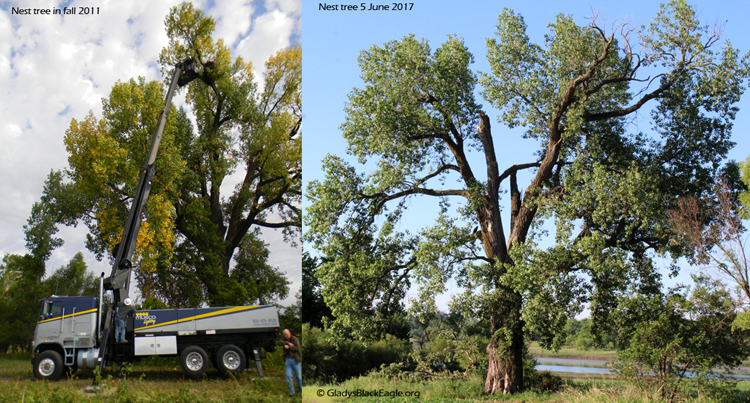
This is not the first eagle nest to come tumbling down. It is with the experience and knowledge that broken nests can also mean bruised or broken young unless they have already learned to “branch.” A brancher is a bird that is exercising wings and moving away from the security of the nest. Birds will hang out on branches within the nest tree until their first flight.
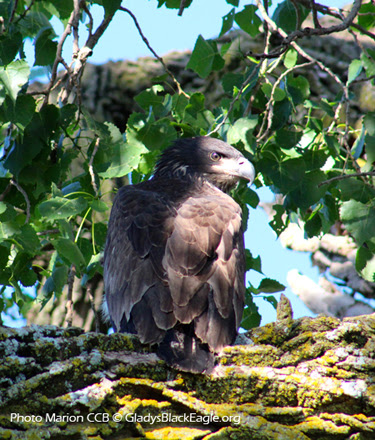
The next morning, upon entering their nest tree area from a distance, heart pumping, feeling slightly sick to my stomach, I felt somewhat relieved to see a healthy young eagle sitting high in the cottonwood.
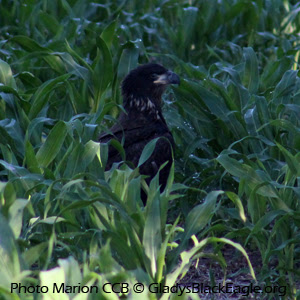
No parents close by. It was of great importance to get a better handle of the devastation of the huge branches and large stick nest. There seemed to be no other young, but as I began rummaging through the ruins, a young, grounded eagle and I met briefly. We were eye to eye, until she ran to the cornfield.
Now the time had come to begin contemplating a rescue or hands-on-assessment of the grounded babe. I will not detail the time, thoughts, contacts and preparation to “make a plan.” But, if it wasn’t for my friends and cohorts Kay Neumann, Director of Saving Our Avian Resources (SOAR) and Linette Bernard, SOAR Communications Director, my chaotic mind in this crucial time of nest tree destruction... pulled me from my abyss. Lest we forget, it takes a “village” to work out the kinks, and too much invasiveness could lead to injury or worsen the situation. The nest tree is still “home base” territory, and intervention isn’t always the best answer.
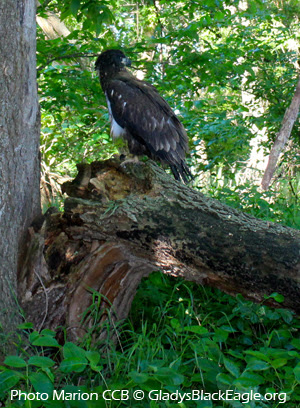
The grounded babe was located again in the woodland not far from the nest tree. Tracking the downy feathers through the cornfield and into a densely wooded area. Remember, she is just a baby...a nine pound+ baby. After the initial assessment of a possible bruised wing, it was decided that she go to SOAR for more assessment of overall health and keep her off the ground until she and her feathers matured a bit.
The feeling of immediate concern was getting better when both eagle parents were at the nest tree and the oldest babe was also in the tree. Eagle parents are good parents. Upon any tragedy, if they are able to overcome injury and sickness, their young are cared for by them to the best of their ability. On the second day of monitoring, there was a young eagle just off of the ground and perching on the broken branches of the nest tree. It spread its wings, jumped and ran to the nearby bean field.
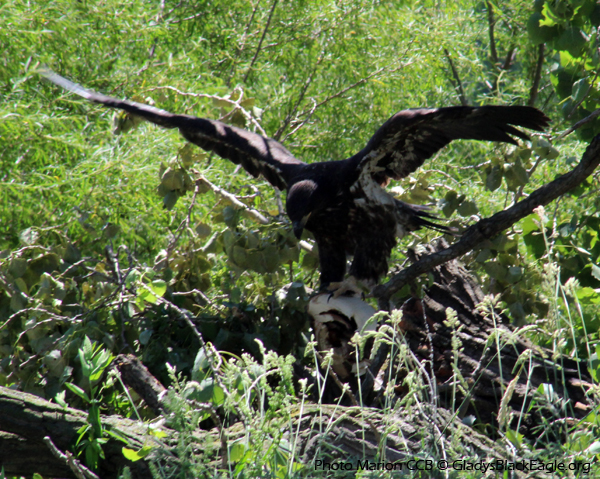
Feeling badly, I thought that maybe the young flying eagle had injured himself and was not getting around with his newly acquired flying skills. This prompted more phone calls to “the village” as to concern that another rescue may be in order. It wasn’t until the third day of nest tree check, that relief was awarded. Thank goodness that baby was able to pull himself together and get back into the top branches of the tree. Calls were made to the village...it was good news and was going to pull back the morning and night checks of the nest tree. Feeling so good, I put the car in reverse and down the scrubby path was an eagle babe perched as high on a “snag” tree as he could get. Hmmm. Flying baby in the tree, adults still around, one baby receiving care...Oh My Gosh! There is a third one! The flying eaglet had eluded me during my visits and stayed undercover.
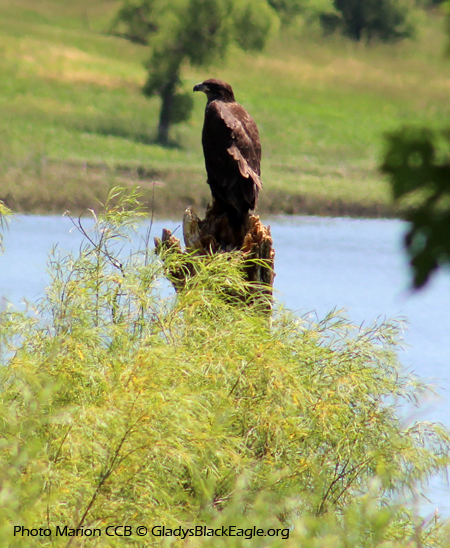
The next three days was spent morning, noon and night watching this bird not moving from the “snag tree” just down the creek from its nest tree. It was the hottest of days reaching 98 degrees and watching the situation left me with at least a hundred chigger bites. Through binocular checks and camera checks the young bird continued to look healthy and was holding its own, even with constant red-winged blackbird tussles.
The fourth day of heat at the early morning check, I would like to say that I was “greeted” warmly by the adult pair, but given the situation, the message was clear. Circling the car with both parents looking down on me told me something was up. Understanding the behavior, this was not the normal morning eagle behavior I had witnessed before. This was a day of transition. This day, the young on the snag had moved to another tree and the parents were encouraging it to continue the journey. Both adults stayed on or near the nest tree, but focused their energy to the young babe, while turning their back on me.
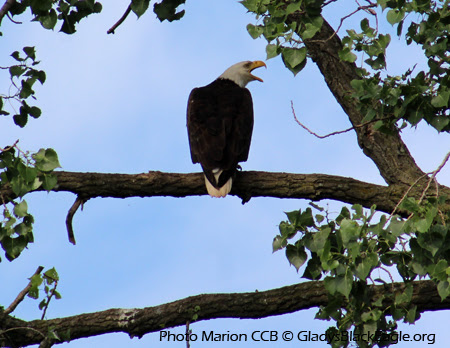
Time for me to leave...worrying will not be over, but “They’ve got this!” Survival and giving credits to the winged and the four-leggeds. Good parents they are. Let’s hope they continue to build and thrive in our little neck of the woods.
Other eagle nest collapses:
- An eagle family in Jasper County experienced a nest collapse during days of rain in early June 2013. One young died during the collapse, and the young male, called Jasper, was being tended to by its parents while floating on a log in a pond during more continuous rainfall. Jasper was successfully rescued and treated for bruising at Saving Our Avian Resources. Jasper was released during a celebration by his rescuer John Mertz. Photo right.
- An eagle nest in Dolliver State Park collapses and one juvenile is rescued and transported to SOAR.
Links for more learning:
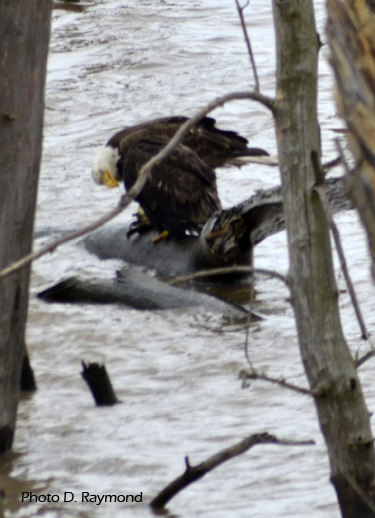
published Friday, June 26, 2020

